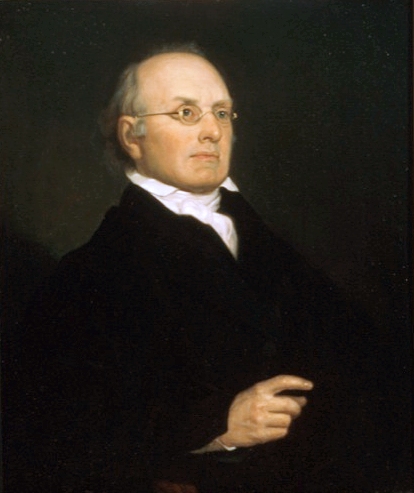|
Antideficiency Act
The Antideficiency Act (ADA) () is legislation enacted by the United States Congress to prevent the incurring of obligations or the making of expenditures (outlays) in excess of amounts available in appropriations or funds. The law was initially enacted in 1884, with major amendments occurring in 1950 () and 1982 (). It is now codified primarily at . The Act is also known as Section 3679 of the Revised Statutes, as amended. The ADA prohibits the U.S. federal government from entering into a contract that is not "fully funded" because doing so would obligate the government in the absence of an appropriation adequate to the needs of the contract. Accordingly, it is often cited during U.S. government shutdowns as a reason for the closure of certain departments or facilities. Provisions The Antideficiency Act has evolved over time in response to various abuses. The earliest version of the legislation was enacted in 1870 (), after the Civil War, to end the executive branch's long histo ... [...More Info...] [...Related Items...] OR: [Wikipedia] [Google] [Baidu] |
Money And Finance
Money is any item or verifiable record that is generally accepted as payment for goods and services and repayment of debts, such as taxes, in a particular country or socio-economic context. The primary functions which distinguish money are as a medium of exchange, a unit of account, a store of value and sometimes, a standard of deferred payment. Money was historically an emergent market phenomenon that possess intrinsic value as a commodity; nearly all contemporary money systems are based on unbacked fiat money without use value. Its value is consequently derived by social convention, having been declared by a government or regulatory entity to be legal tender; that is, it must be accepted as a form of payment within the boundaries of the country, for "all debts, public and private", in the case of the United States dollar. Contexts which erode public confidence, such as the circulation of counterfeit money or domestic hyperinflation, can cause good money to lose its value. ... [...More Info...] [...Related Items...] OR: [Wikipedia] [Google] [Baidu] |
Apportionment (OMB)
An apportionment is an Office of Management and Budget-approved plan to use budgetary resources (; ). It typically limits the obligations the federal government may incur for specified time periods, programs, activities, projects, objects, etc. An apportionment is legally binding, and obligations and expenditures (disbursements) that exceed an apportionment are a violation of, and are subject to reporting under, the Antideficiency Act The Antideficiency Act (ADA) () is legislation enacted by the United States Congress to prevent the incurring of obligations or the making of expenditures (outlays) in excess of amounts available in appropriations or funds. The law was initially e ..... The desired goal of the apportionment process is the promotion of economy and efficiency in the use of appropriations. References Public administration United States federal law {{US-gov-stub ... [...More Info...] [...Related Items...] OR: [Wikipedia] [Google] [Baidu] |
January 2018 United States Federal Government Shutdown
The United States federal government shutdown of January 2018 began at midnight EST on Saturday, January 20, 2018, and ended on the evening of Monday, January 22. The shutdown began after a failure to pass legislation to fund government operations and agencies. This stemmed from disputes over the extension of status of persons affected by the Deferred Action for Childhood Arrivals (DACA) immigration policy, and therefore whether those covered under the program should face deportation. There was also a dispute over whether funding should be allocated towards building a Mexico–United States border wall. According to estimates by the New York Times, 692,900 workers were furloughed during the shutdown. Background The U.S. government's 2018 fiscal year began on October 1, 2017. Because regular appropriations bills to fund the government had not been passed, Congress funded the government through a series of three temporary continuing resolutions (CRs). These extended governme ... [...More Info...] [...Related Items...] OR: [Wikipedia] [Google] [Baidu] |
2013 United States Federal Government Shutdown
From October 1 to October 17, 2013, the United States federal government entered a shutdown and curtailed most routine operations because neither legislation appropriating funds for fiscal year 2014 nor a continuing resolution for the interim authorization of appropriations for fiscal year 2014 was enacted in time. Regular government operations resumed October 17 after an interim appropriations bill was signed into law. During the shutdown, approximately 800,000 federal employees were indefinitely furloughed, and another 1.3 million were required to report to work without known payment dates. Only those government services deemed "excepted" under the Antideficiency Act were continued; and only those employees deemed "excepted" were permitted to report to work. The previous U.S. federal government shutdown was in 1995–96. The 16-day-long shutdown of October 2013 was the third-longest government shutdown in U.S. history, after the 35-day 2018–2019 shutdown and the 21-day 1 ... [...More Info...] [...Related Items...] OR: [Wikipedia] [Google] [Baidu] |
1995–1996 United States Federal Government Shutdowns
The United States federal government shutdowns of 1995 and 1995–96 were the result of conflicts between Democratic Party (United States), Democratic President Bill Clinton and the Republican Party (United States), Republican Congress over funding for education, the environment, and public health in the 1996 United States federal budget, 1996 federal budget. The shutdowns lasted from November 14 through November 19, 1995, and from December 16, 1995, to January 6, 1996, for 5 and 21 days, respectively. The first shutdown occurred after Clinton vetoed the Appropriations bill (United States), spending bill the Republican-controlled Congress sent him, as Clinton opposed the budget cuts favored by Speaker of the House Newt Gingrich and other Republicans. The first budget shutdown ended after Congress passed a temporary budget bill, but the government shut down again after Republicans and Democrats were unable to agree on a long-term budget bill. The second shutdown ended with congre ... [...More Info...] [...Related Items...] OR: [Wikipedia] [Google] [Baidu] |
1990 United States Federal Government Shutdown
The United States federal government Government shutdown in the United States, shutdown from Saturday, October 6, until Monday, October 8, 1990. It stemmed from the fact that a Deficit reduction in the United States, deficit reduction package negotiated by President George H. W. Bush contained tax increases, despite his campaign promise of "read my lips: no new taxes", leading to a revolt led by Minority Whip of the U.S. House of Representatives, House Minority Whip Newt Gingrich that defeated the initial appropriations package. Because the shutdown occurred over a weekend, the effects of the shutdown were lessened, with the National Park Service, National Parks and the Smithsonian Institution, Smithsonian museums being the most visible closures. Around 2,800 workers were Furlough#Federal government, furloughed, with the government losing $2.57 million in lost revenue and back wages. Background The shutdown stemmed from disagreements over the 1991 United States federal budge ... [...More Info...] [...Related Items...] OR: [Wikipedia] [Google] [Baidu] |
1980 United States Federal Government Shutdown
The United States federal government shutdown for the first time on May 1, 1980, for one day and effected only the Federal Trade Commission. Congress had allowed its funding to lapse as part of an effort to pass an authorization bill that would limit its powers, but the Carter Administration for the first time enforced a shutdown of a federal agency based on a new interpretation of the 1884 Antideficiency Act, causing new funding to be approved that evening. The shutdown caused the furlough of 1,600 employees and cost the government $700,000 (equal to $ million in ), mostly as a result of lost labor. Background Prior to 1980, List of United States federal funding gaps, federal funding gaps caused by the expiration of Appropriations bill (United States), appropriations legislation did not lead to government shutdowns. This was technically noncompliant with the Antideficiency Act, a law passed in 1884 that made it illegal to expend government funds without a Congressional appropr ... [...More Info...] [...Related Items...] OR: [Wikipedia] [Google] [Baidu] |
Impoundment Of Appropriated Funds
Impoundment is an act by a President of the United States of not spending money that has been appropriated by the U.S. Congress. Thomas Jefferson was the first president to exercise the power of impoundment in 1801. The power was available to all presidents up to and including Richard Nixon, and was regarded as a power inherent to the office. The Congressional Budget and Impoundment Control Act of 1974 was passed in response to perceived abuse of the power under President Nixon. The Act removed that power, and '' Train v. City of New York'' (whose facts predate the 1974 Act, but which was argued before the U.S. Supreme Court after its passage), closed potential loopholes in the 1974 Act. The president's ability to indefinitely reject congressionally approved spending was thus removed. The Impoundment Control Act of 1974 provides that the president may propose rescission of specific funds, but that rescission must be approved by both the House of Representatives and Senate within 4 ... [...More Info...] [...Related Items...] OR: [Wikipedia] [Google] [Baidu] |
Government Procurement In The United States
The processes of government procurement in the United States enable federal, state and local government bodies in the country to acquire goods, services (including construction), and interests in real property. In fiscal year 2019, the US Federal Government spent $597bn on contracts.Bloomberg GovernmentBGOV200: Federal Industry Leaders 2019 accessed 9 July 2020 The market for state, local, and education (SLED) contracts is thought to be worth $1.5 trillion. Contracts for federal government procurement usually involve appropriated funds spent on supplies, services, and interests in real property by and for the use of the Federal Government through purchase or lease, whether the supplies, services, or interests are already in existence or must be created, developed, demonstrated, and evaluated. Federal Government contracting has the same legal elements as contracting between private parties: a lawful purpose, competent contracting parties, an offer, an acceptance that complies with ... [...More Info...] [...Related Items...] OR: [Wikipedia] [Google] [Baidu] |
Taxing And Spending Clause
The Taxing and Spending Clause (which contains provisions known as the General Welfare Clause and the Uniformity Clause), Article I, Section 8, Clause 1 of the United States Constitution, grants the federal government of the United States its power of taxation. While authorizing Congress to levy taxes, this clause permits the levying of taxes for two purposes only: to pay the debts of the United States, and to provide for the common defense and general welfare of the United States. Taken together, these purposes have traditionally been held to imply and to constitute the federal government's taxing and spending power. The text of the constitution reads thus: Background One of the most often claimed defects of the Articles of Confederation was its lack of a grant to the central government of the power to lay and collect taxes. Under the Articles, Congress was forced to rely on requisitions upon the governments of its member states. Without the power to independently raise i ... [...More Info...] [...Related Items...] OR: [Wikipedia] [Google] [Baidu] |
Government Shutdowns In The United States
In the United States, government shutdowns occur when there is a failure to enact Appropriations bill (United States), funding legislation to finance the government for its next fiscal year or a temporary funding measure. Ever since a 1980 interpretation of the 1884 Antideficiency Act, a "lapse of appropriation" due to a political impasse on proposed Appropriations bill (United States), appropriation bills requires that the United States federal government, US federal government curtail agency activities and services, close down non-essential operations, furlough non-essential workers, and only retain essential employees in departments covering the safety of human life or protection of property. Voluntary services may only be accepted when required for the safety of life or property. Shutdowns can also occur within and disrupt U.S. state, state, Territories of the United States, territorial, and local levels of government. Since the enactment of the US government's current budg ... [...More Info...] [...Related Items...] OR: [Wikipedia] [Google] [Baidu] |
Office Of The Inspector General
In the United States, Office of Inspector General (OIG) is a generic term for the oversight division of a federal or state agency aimed at preventing inefficient or unlawful operations within their parent agency. Such offices are attached to many federal executive departments, independent federal agencies, as well as state and local governments. Each office includes an inspector general (or I.G.) and employees charged with identifying, auditing, and investigating fraud, waste, abuse, embezzlement and mismanagement of any kind within the executive department. History In the United States, other than in the military departments, the first Office of Inspector General was established by act of Congress in 1976 under the Department of Health and Human Services to eliminate waste, fraud, and abuse in Medicare, Medicaid, and more than 100 other departmental programs. With approximately 1,600 employees, the HHS-OIG performs audits, investigations, and evaluations to recommend policy ... [...More Info...] [...Related Items...] OR: [Wikipedia] [Google] [Baidu] |



.jpg)

